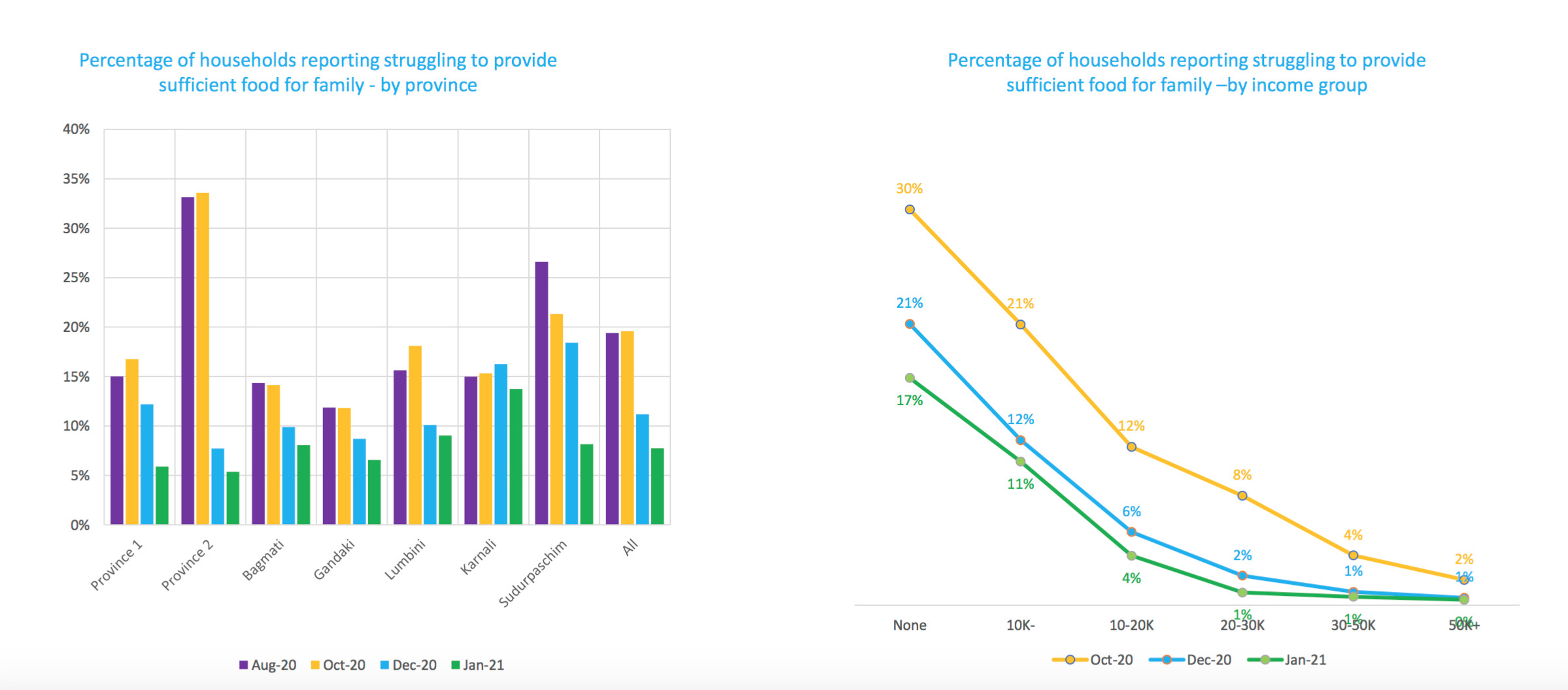New Nepal lockdown may cancel gains

Just over a year of living with the pandemic, Nepalis were just starting to get back on their feet, their income and nutrition status was improving, when another lockdown was announced this week to contain the second wave.
According to the latest round of the nationwide poll, the loss of jobs and livelihoods was down from 61% in July and 55% in May 2020 to 19% in January. However, 40% of Nepali households are at risk of falling back into poverty with earnings less than Rs10,000 per month.
The recovery however is uneven, families where members have lost jobs, that have persons with disabilities and headed by the females are earning none or less than 10K.


This was the sixth in a series of periodic household surveys conducted by Sharecast Initiative Nepal on behalf of UNICEF to track the socio-economic multi-sectoral impact of Covid-19 on children and families in Nepal, and was conducted before the current surge.
Nepali Times has been tracking the outcomes of these surveys which were previously conducted in May, July, August and October and December.
The latest survey in December also found out that 97% of the children were going to school with 89% of them taking classes online. Only 5% were being homeschooled. Bagmati and Gandaki provinces had most schools offering distance learning facilities.
Even as more parents gain confidence to send their children back to physical classrooms, up to 61% from as low as 38% back in October, remote learning will continue to be the norm as schools close again following the latest surge in new cases and the new lockdowns from Thursday in 10 of the most populous districts, including Kathmandu, Lalitpur, and Bhaktapur.

In another decreasing tread, only 8% of households reported not getting sufficient food in January down from 19% back in August 2020. The improvement is visible across all income groups, but less so for those in lower quantiles.
On the nutrition front, 6% of respondents reported that their children were eating only 2 meals a day. These are mainly families struggling for food, with job losses, or from lower-income groups.
Another 70% said their children were eating three meals a day, and a quarter of families said they could afford more than 3 meals a day.


How are Nepali families doing in terms of safety measures against Covid-19?
The survey showed that 52% practised handwashing for 20 seconds or more all the time. Only 37% wore a mask in public at all times while only 10% practised 2m safe distancing every time they were out. Province 2 respondents scored lowest on all the fronts.
There is a decreasing trend in the share of respondents reporting all the time or most of the time, with increases in those saying 'rarely' and 'never'. Lack of infrastructure and jobs were the main reasons given for not being able to practise protective measures.

Violence against women and children on the other hand has steadily picked up with 6% witnessing violence against women and/or children in January.
Interestingly, the top income group is the most likely to witness domestic violence against women while the lowest two income groups are more prone to abandon a child.
Some 6%of respondents also noticed or heard of children being trafficked, the number went up to 26% with regards to child marriage and 6% for child labour or migration. Respondents from Province 2 were most likely to report all three.
Read also: Nepal’s economic downturn, 1 year after lockdown, Ramesh Kumar




